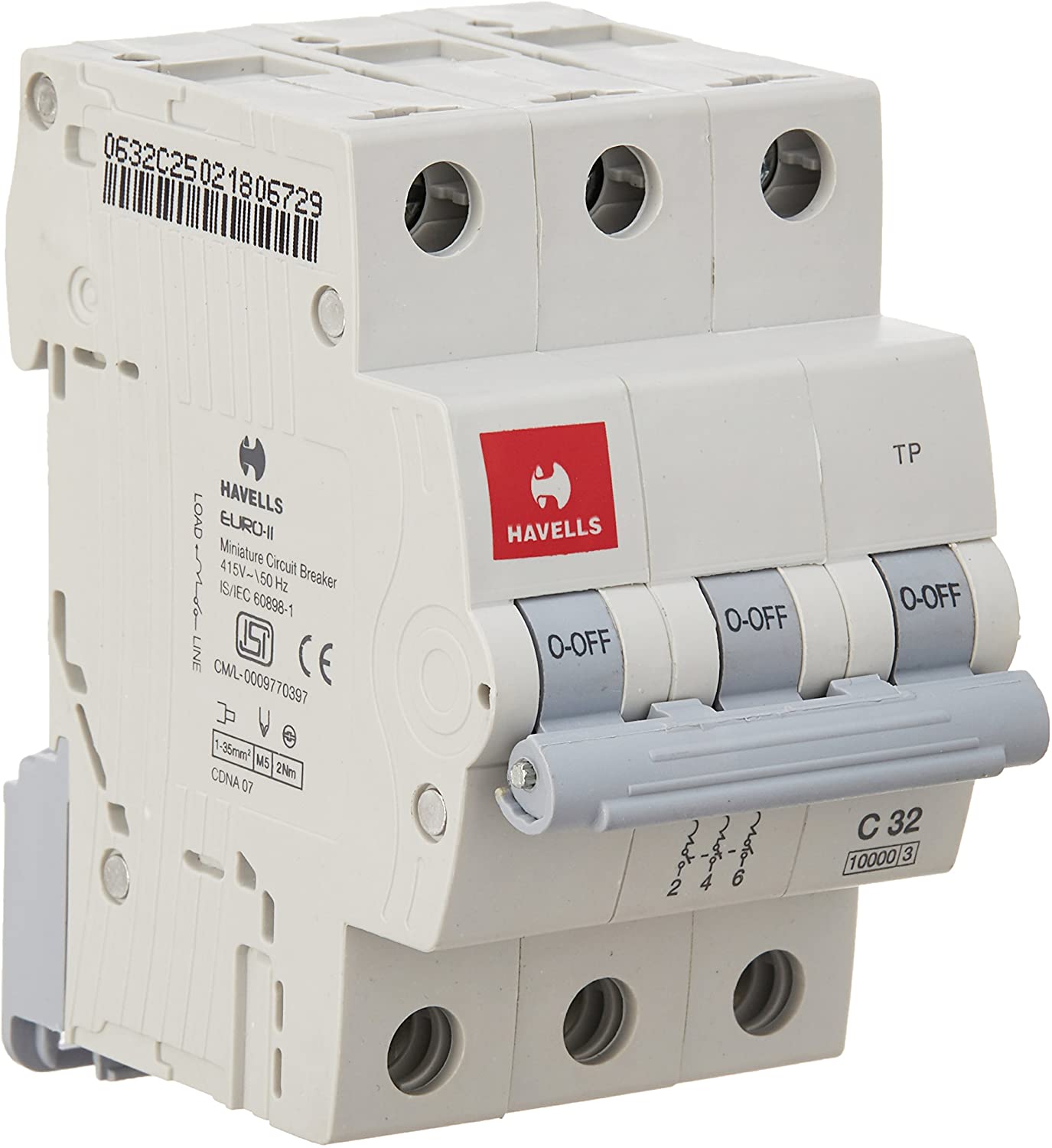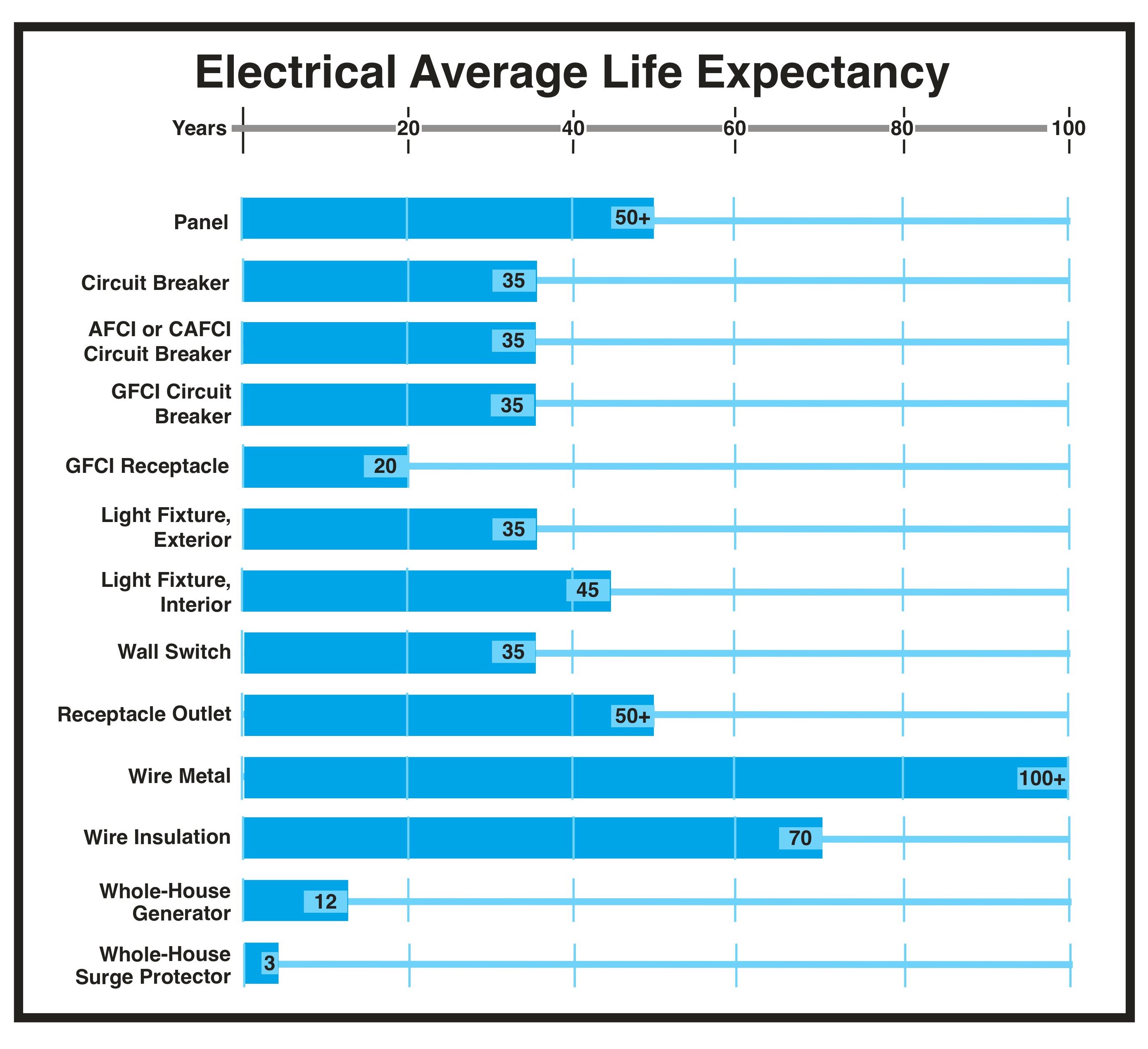Spectacular Tips About What Is The Lifespan Of A MCB

Decoding the Durability of Your MCB
1. Understanding the Miniature Circuit Breaker
Ever wondered about those little switches in your electrical panel? Those are Miniature Circuit Breakers, or MCBs. They're the unsung heroes that protect your home from electrical overloads and short circuits. Think of them as tiny, tireless security guards, constantly watching for trouble. But like any good protector, they don't last forever. Understanding the lifespan of a MCB is key to ensuring your electrical system remains safe and reliable, not to mention avoiding unexpected outages during your favorite show. It's not exactly the most thrilling topic, but trust me, a little knowledge here can save you a lot of headaches (and possibly some money) down the road.
So, what exactly is an MCB? Simply put, it's an automatically operated electrical switch designed to protect an electrical circuit from damage caused by excess current from an overload or short circuit. Its basic function is to interrupt current flow to prevent damage. Unlike a fuse, which operates once and then needs to be replaced, an MCB can be reset (either manually or automatically) to resume normal operation. They are generally more reliable and efficient than fuses. Theyre the guardians of your gadgets, the sentinels of your sockets, and the wardens of your wiring!
The beauty of an MCB lies in its reusability. When a fault occurs, the MCB trips, cutting off the electricity supply. After you've identified and resolved the issue, you can simply flip the switch back on. No need to rummage through drawers for a replacement fuse! This feature alone makes MCBs a far more convenient and economical option for modern electrical systems. Plus, most modern MCBs offer superior protection features that older fuse boxes simply can't match. Consider it an upgrade for your peace of mind, too!
But, to reiterate the key point, while MCBs are resilient, they aren't immortal. They have a finite lifespan, and knowing what affects it is crucial for maintaining a safe and reliable electrical system. Ignoring the lifespan of your MCB can lead to malfunction, reduced protection, or even failure, which can lead to electrical fires or other hazards. Stay tuned to find out just how long these little protectors are expected to stick around, and what can influence their tenure. Think of it as giving your home's electrical system a regular check-up!

The Factors That Determine the Longevity of an MCB
2. Decoding the Influences on MCB Lifespan
Now, let's talk about the lifespan of a MCB — thats the keyword term we're focusing on! Unfortunately, there's no magic number. The lifespan can vary considerably depending on several factors. We're not talking about some kind of lottery here, though; understanding these factors puts you in a much better position to estimate how long your MCBs will last and when it's time to consider replacing them. It's all about informed decision-making, and a little preventative maintenance.
First, and perhaps most importantly, is the quality of the MCB. As with anything, you get what you pay for. Cheaper, lower-quality MCBs are likely to have a shorter lifespan than those from reputable manufacturers. They may be made with inferior materials, have less robust internal mechanisms, and be more susceptible to wear and tear. Investing in a high-quality MCB from the start is almost always a better long-term strategy. Consider it an investment in your safety and peace of mind, and it could even save you money in the long run by avoiding frequent replacements.
Another key factor is the frequency of tripping. Every time an MCB trips, it puts stress on its internal components. Frequent tripping, especially due to chronic overloading or short circuits, will significantly shorten its lifespan. If your MCBs are constantly tripping, it's a sign of a more significant problem in your electrical system that needs to be addressed. Don't just keep resetting the breaker — investigate the cause! It could be a faulty appliance, overloaded circuit, or a wiring issue. Ignoring the problem can lead to a cascade of issues, including premature MCB failure.
Finally, environmental conditions play a significant role. Excessive heat, humidity, and dust can all negatively impact an MCB's performance and lifespan. For example, if your electrical panel is located in a damp basement or a hot attic, your MCBs will likely degrade faster. Proper ventilation and a clean environment can help extend their lifespan. Regular cleaning of your electrical panel (after disconnecting the power, of course!) can help prevent dust buildup and maintain optimal operating conditions. It's all about creating a healthy environment for your electrical components.

Z Eng ((What Is The Difference Between MCB, MCCB, ELCB, And, 56 OFF
Estimating the Years
3. Putting Numbers to the Equation
Alright, let's try to pin down a number. While there's no guaranteed lifespan, a well-maintained, high-quality MCB in a normal environment can generally be expected to last 15 to 25 years. However, this is just an estimate, and as we've discussed, several factors can influence this timeline. Consider this a rough guideline, not a hard-and-fast rule. Just like with car maintenance, your mileage may vary!
A crucial point to remember is that this lifespan refers to normal operating conditions. If your MCB experiences frequent tripping, is exposed to harsh environments, or is of low quality, its lifespan could be significantly shorter, potentially dropping to 5 to 10 years, or even less in extreme cases. It's like the difference between a car that's meticulously maintained and one that's driven hard and neglected.
Therefore, rather than relying solely on the age of the MCB, it's essential to pay attention to its performance. Look for signs of wear and tear, such as discoloration, loose connections, or frequent tripping. If you notice any of these issues, it's time to consider replacing the MCB, regardless of its age. Think of it as listening to your body; if something doesn't feel right, it's best to get it checked out.
Ultimately, the best approach is to combine age with observation. Keep track of when your MCBs were installed and periodically inspect them for any signs of problems. This proactive approach will help you identify potential issues before they escalate and ensure that your electrical system remains safe and reliable for years to come. It's all about staying vigilant and taking a preventative approach. Remember, a little bit of attention can go a long way!

What Is Pole In MCB Type Of MCBAll SP DP TP TPN YouTube
Signs Your MCB Might Be Nearing the End
4. Identifying the Warning Signals
Even the sturdiest MCB will eventually show signs of wear and tear. Knowing these signs can help you catch potential problems early and prevent more serious electrical issues. It's like learning to recognize the warning lights on your car's dashboard; they're there to tell you something's not quite right.
One of the most obvious signs is frequent tripping. While occasional tripping can be caused by temporary overloads, repeated tripping on the same circuit suggests a more persistent problem. It could be a sign that the MCB is becoming more sensitive or that there's a fault in the circuit itself. Don't just keep resetting the breaker; investigate the cause and consider replacing the MCB if the problem persists.
Visible damage is another clear indicator. Look for cracks, discoloration, or burn marks on the MCB casing. These are signs of overheating or electrical arcing, which can compromise the MCB's functionality. Any visible damage should be considered a serious warning sign, and the MCB should be replaced immediately. It's better to be safe than sorry when it comes to electrical safety.
Another subtle sign is loose connections. Over time, the screws and terminals on an MCB can loosen, leading to poor contact and increased resistance. This can cause the MCB to overheat and eventually fail. Regularly check the connections on your MCBs and tighten them as needed (after disconnecting the power, of course!). A simple visual inspection and a gentle tug on the wires can often reveal loose connections. Consider it a quick preventative maintenance check.
Finally, erratic behavior can also indicate a failing MCB. This could include the MCB tripping for no apparent reason, or failing to trip when it should. Such unpredictable behavior suggests that the internal mechanisms of the MCB are malfunctioning and that it's no longer providing reliable protection. In such cases, replacement is essential to ensure your electrical system remains safe and protected. Don't gamble with your safety; replace the MCB immediately!

What Is The Average Life Expectancy Of A Gas Range?
Replacing Your MCB
5. The Practical Steps for a Safer Home
So, you've determined that your MCB needs replacing. What now? First and foremost, safety is paramount. Never attempt to replace an MCB unless you are comfortable working with electricity and understand the risks involved. If you're not sure, always call a qualified electrician. It's simply not worth risking your safety to save a few bucks.
Before you start, turn off the main power to your electrical panel. This is absolutely essential to prevent electric shock. Use a voltage tester to confirm that the power is off before touching any wires or components. Double-check, and then triple-check! You can never be too careful when dealing with electricity.
When choosing a replacement MCB, make sure it has the same amperage rating and breaking capacity as the original. Using the wrong size MCB can be dangerous and can damage your electrical system. Consult the label on the old MCB or your electrical panel to determine the correct specifications. If you're unsure, ask a qualified electrician for advice. It's always better to err on the side of caution.
Finally, when installing the new MCB, ensure that all connections are tight and secure. Loose connections can cause overheating and arcing, which can lead to fires. Double-check all connections after installation and use a torque screwdriver to ensure they are properly tightened. Once you've completed the replacement, turn the power back on and test the new MCB to ensure it's working properly. It's like performing a final quality control check before putting the system back into operation. And, if you're even slightly uneasy, don't hesitate to call in a professional. Your peace of mind is worth it.
